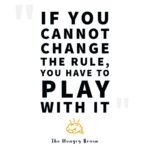In our ongoing exploration of negotiation dynamics, it’s high time we delve into fundamental aspects: the basic parameters and rules that underpin successful negotiations. Gone are the days of fixating on the physical placement at a negotiation table—our current era emphasizes virtual interactions, with participants toggling mute buttons and cameras on and off. Nonetheless, several key considerations remain paramount in significant negotiations: BATNA, flexibility, cross-functional collaboration, and navigating political nuances.
BATNA: Unveiling Negotiating Power
At the core of any negotiation, beyond the asymmetry of information, lies the concept of BATNA (Best Alternative to a Negotiated Agreement). Often dubbed the walk-away point, BATNA prompts the crucial question: “What if we can’t reach resolution? What if I reject the deal?” The response to these questions defines your negotiating leverage. Procurement and supply chain professionals bear the responsibility of fortifying this walk-away opportunity. While dreaming of endless alternate suppliers, specifications, or project cancellation might be ideal, the reality is often different. The ability to walk away is frequently constrained by a lack of alternatives. Therefore, it becomes imperative to assess your walk-away position before entering negotiations and avoid making such decisions on the fly.
Real-time Adjustments: Navigating Dynamism
Real-time adjustments, characterized by dynamic negotiation, involve the ability to adapt strategies in response to new information. This could encompass suppliers introducing non-price opportunities, unexpected eagerness (or hesitance) from the counterparty (see BATNA, they have one too!), or a game-changing proposal altering the negotiation landscape. A skilled negotiator gracefully incorporates such changes, reassesses their BATNA and pre-existing data, and evaluates whether new offers genuinely add value or are mere distractions. Taking a break to consult stakeholders or for self-reflection is perfectly acceptable in these situations. You can take your break to turn your camera off, go to the bathroom, strike a power pose, and tell yourself, “I can do this. I’ve got this. I know what I want, and how I want it, and I’m going to go get it, even though they’re changing things.”
Cross-functional Teams: Leveraging Diverse Expertise
While assembling a team of proficient negotiators is tempting, relying solely on procurement or supply chain experts may limit the negotiation’s potential. Embracing a cross-functional team proves invaluable. Engineers may not be negotiation aces, but their insights on non-price negotiation options are invaluable. Finance, accounting, and legal experts contribute specialized knowledge on monetary aspects, cash flows, and risk acceptance. Whether physically present or not, a cross-functional team provides robust support for a successful negotiation.
Politics: Deciphering the Negotiation Landscape
Politics, a perennial favorite in any discussion, plays a crucial role in negotiations. Successful negotiators invest effort in understanding the counterparts, discerning their motivations, and identifying points of emphasis. Recognizing what matters to the other party, whether a salesperson driven by commission (who might be willing to give a 1% early payment discount, but unwilling to cut the price by 1% because that cuts into their commission) or an environmental technician focused on specific permits, enables negotiators to add value to both sides. Negotiation success often hinges on aligning proposals with the counterpart’s values and goals.
In conclusion, this negotiation mini-series has aimed to provide value by exploring data-driven techniques, adapting to rule changes, considering non-price factors, and establishing negotiation parameters.
Join us next week as we embark on a journey through the entire supply chain cycle, unraveling insights from contracting and sourcing to assessments. A holistic approach, encompassing skills, processes, and meticulous planning, is key to mastering the intricacies of a comprehensive supply chain. Let my model guide you in organizing and navigating this complex landscape!




